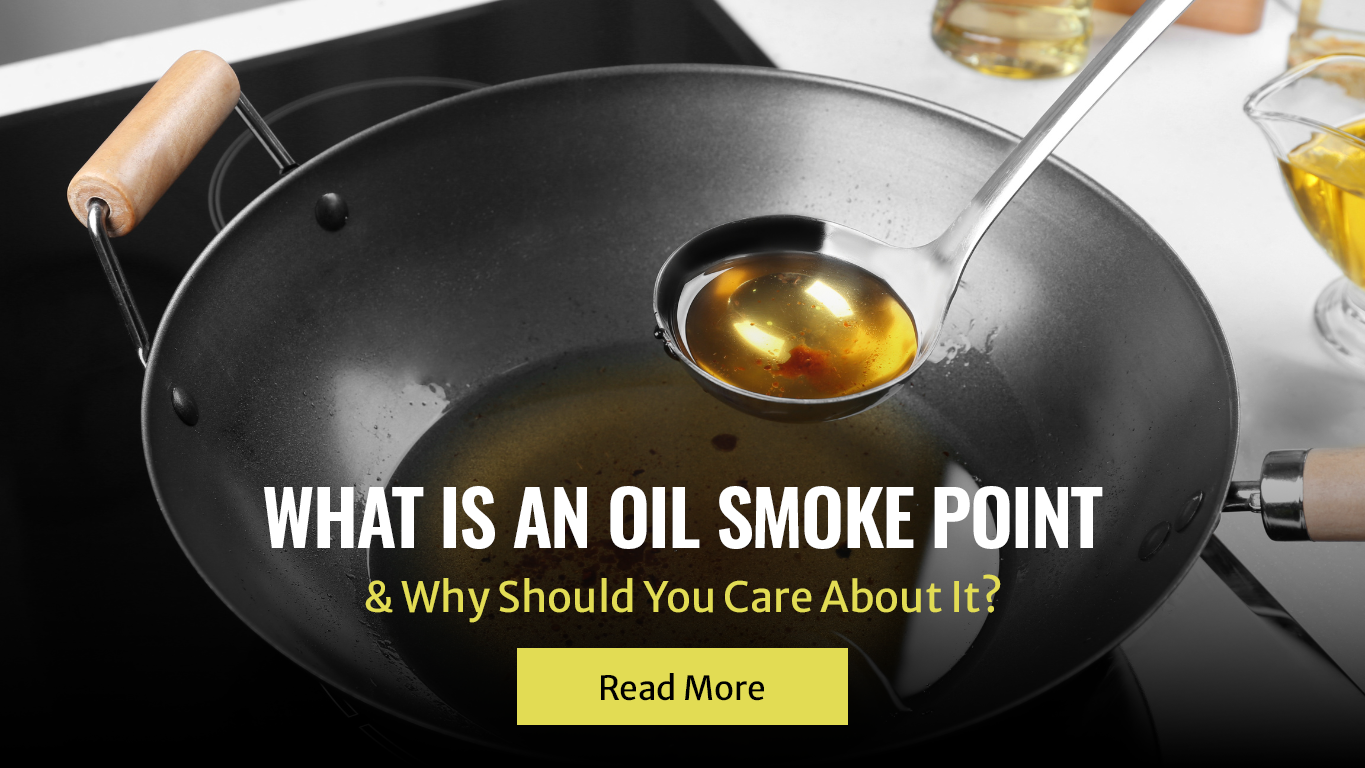So you’re heating your pan, adding in oil, all ready to cook - and suddenly, it starts to smoke. It’s not the dramatic stir-fry kind of sizzle, it smells… burnt?
You might have just hit the smoke point of your oil. Let’s unpack what that really means.
What is a smoke point?
The smoke point is the temperature at which oil starts to break down and release visible smoke.
Once it crosses that point, the flavour changes, the nutrients start to degrade, and the oil just doesn’t do its job as well anymore.
Different oils have different smoke points. And depending on what you’re cooking, using the right one makes a noticeable difference! For example, Groundnut Oil has a smoke point of around 160–170°C which makes it perfect for medium-heat daily cooking, whereas Mustard Oil has a smoke point of 190–200°C, making it great for tadkas, frying and more!
This doesn’t mean you can’t use Groundnut Oil for frying or tadkas - it just means you have to watch out for smoke and a burning smell to keep it under control!
Why should you care?
Because cooking with oil that’s past its smoke point can ruin your food’s flavour, making it taste slightly bitter or burning the spices.
Also, in day-to-day cooking (especially if you like frying, roasting, or tadkas), the oil is going through seriously high heat. So it helps to know which oil can handle the pressure - and which one’s better for gentler stuff like drizzling or sautéing!
Picking the right oil for the right heat
Not sure where to start? Here are three things to keep in mind when choosing your oil:
- Think about how you cook. Are you mostly sautéing, roasting, air-frying, or just drizzling over salads? Your method matters more than you think.
- Check the label - but keep it simple. Look for oils that mention how they’re processed (cold-pressed, physically refined, etc.), and avoid ones with long lists of additives.
- Use only what you need. No matter the oil, portion control makes all the difference. Too much of anything - even the good stuff - can weigh you down.
Using the right oil for the right cooking method helps you retain nutrients, avoid burnt flavours, and cook smarter. Because healthy cooking isn’t just about what you use - it’s about how you use it!





